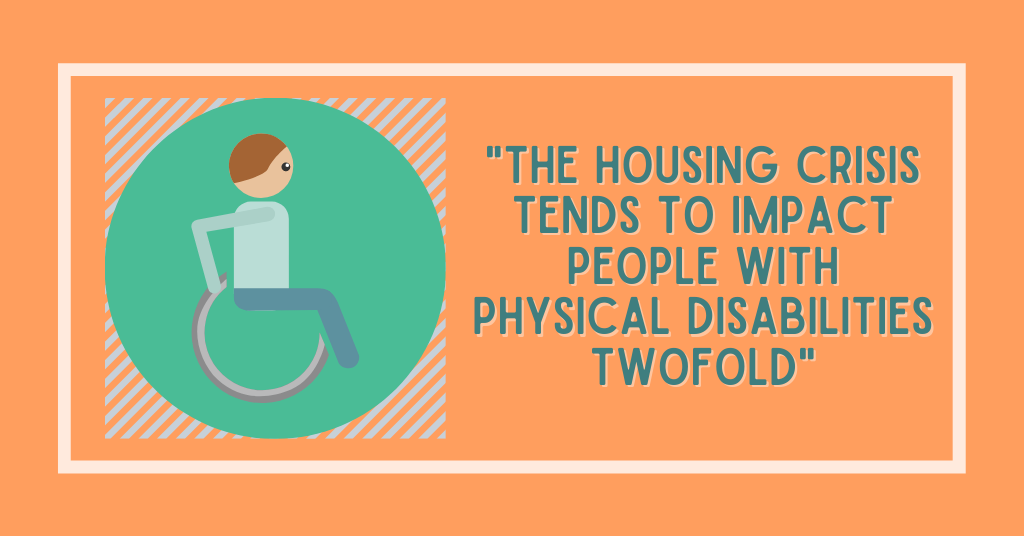People with disabilities are a hugely ignored demographic in many ways, and this includes conversations about the effects of the housing crisis. There tends to be very little awareness or attention around how housing shortages and elevated rent prices affect people living with disabilities.
Unfortunately, the housing crisis tends to impact people with physical disabilities twofold—affordability AND accessibility must be considered in searching for a home. The housing shortage has made the search for affordable housing difficult for anyone, but people with disabilities are especially affected, partly because most homes are built inaccessible to them. According to a recent study by Apartment List, only 6% of homes across the U.S. are considered accessible, while 15% of U.S. households are home to someone with a disability. Therefore, the housing shortage especially impacts those with physical disabilities.
 The effect of this shortage is that accessible homes become more expensive since they are in such higher demand. At the same time,people with disabilities face double the average rate of poverty, according to a study by The National Council on Disability. People with disabilities are then more likely than average to be cost-burdened, meaning they spend more than the recommended 30% of income on rent. According to Rob Warnock of Apartment List, “In L.A., 65.2% of renter households with a disability are cost burdened, compared to 55.5% of those without a disability.” This is a phenomenon that perpetuates higher rates of poverty and housing insecurity among people with disabilities.
The effect of this shortage is that accessible homes become more expensive since they are in such higher demand. At the same time,people with disabilities face double the average rate of poverty, according to a study by The National Council on Disability. People with disabilities are then more likely than average to be cost-burdened, meaning they spend more than the recommended 30% of income on rent. According to Rob Warnock of Apartment List, “In L.A., 65.2% of renter households with a disability are cost burdened, compared to 55.5% of those without a disability.” This is a phenomenon that perpetuates higher rates of poverty and housing insecurity among people with disabilities.
When it comes to comparing the accessibility of multi-family and single-family homes, newly built multi-family units are often much more accessible. According to the U.S. Access Board, while the construction of many multi-family units is subject to the design requirements of the Fair Housing Act, single-family homes are often not so regulated. In fact, according to Apartment List, “In the 2000s, over 20 percent of new multi-family units were accessible, compared to less than 10 percent of new single-family homes.” Therefore, moving away from single-family zoning would be helpful not only in ending the legacy of housing segregation, but also encouraging more homes to be accessible to people with disabilities.
As always, it’s important to understand how the housing crisis affects groups differently. The housing shortage is clearly placing a higher burden on people with disabilities, and we should incorporate this knowledge into our advocacy as we fight for a more equitable Los Angeles.




